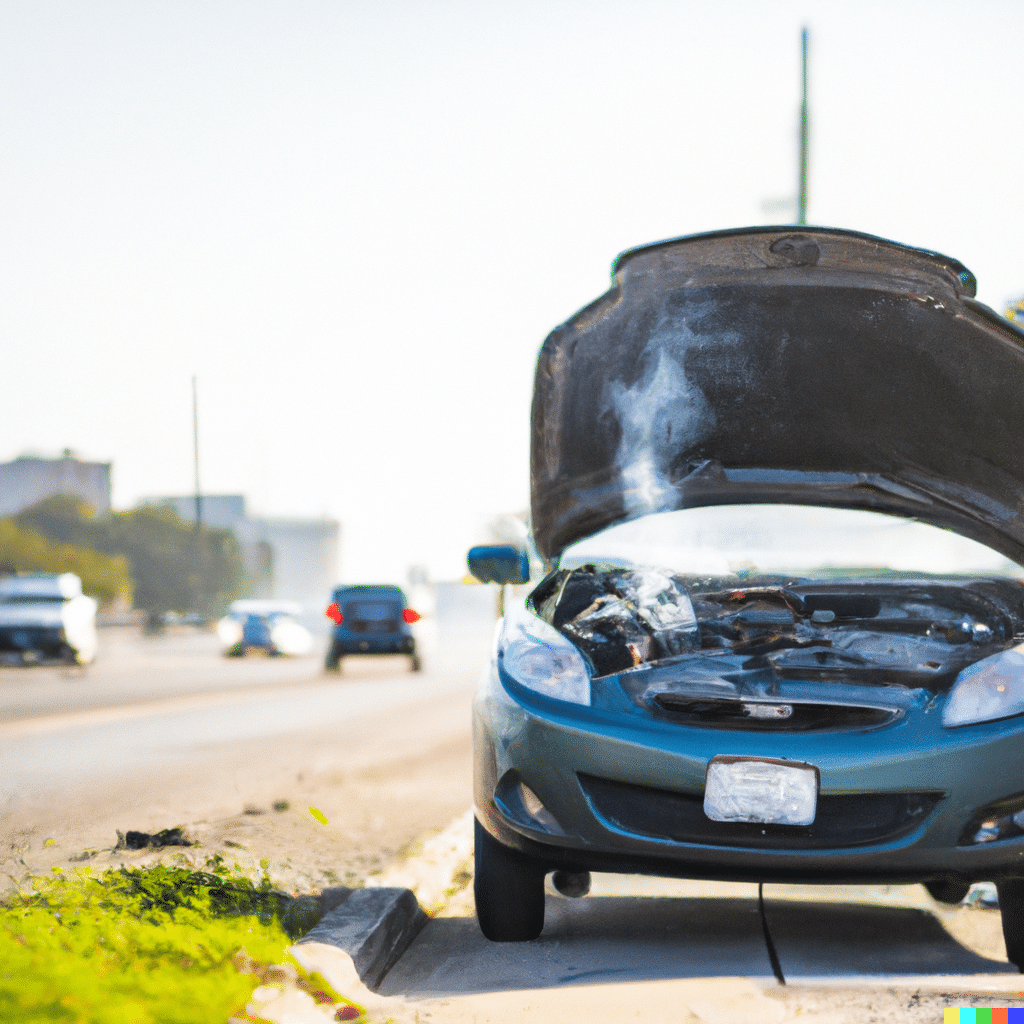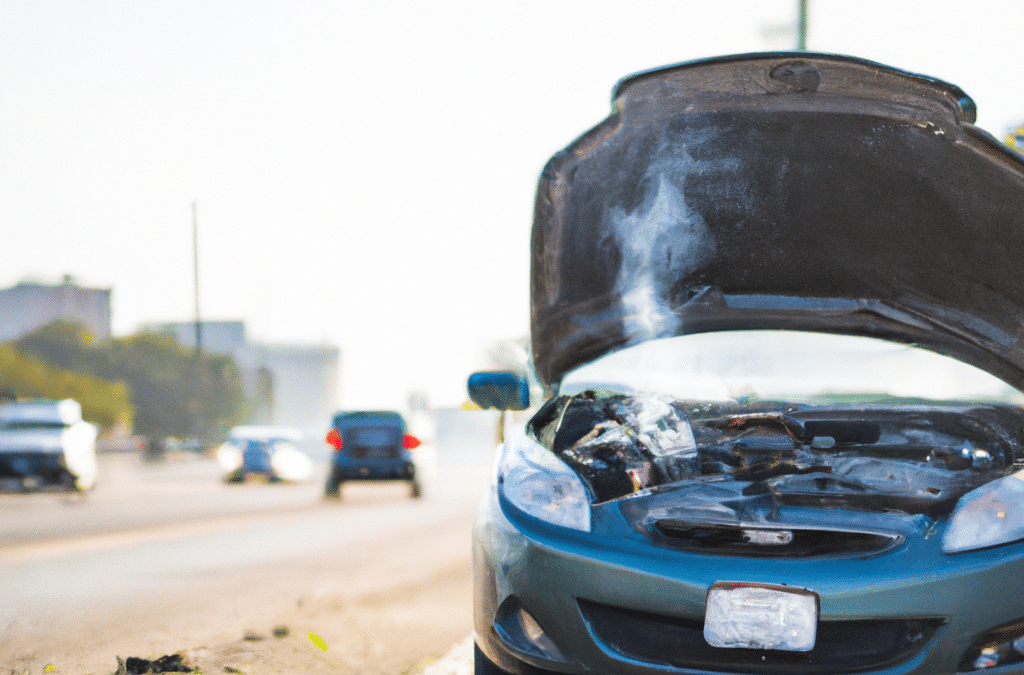
How to Fix Some of the Most Common Car Problems Yourself
As a car owner, there's nothing worse than getting stranded on the side of the road with a broken-down vehicle. It's frustrating, inconvenient, and costly if you have to call a tow truck or take your car to a mechanic. However, many common car issues can be easily fixed with some knowledge and basic tools. In this article, we'll discuss the seven most common car issues and provide quick fixes to get you back on the road in no time.
1. Introduction
Car issues can be frustrating, but they're a part of owning a vehicle. Knowing how to deal with everyday problems can save you time and money and quickly get you back on the road. This article will provide quick fixes for 7 of the most common car issues.
2. Dead Battery
A dead battery is a common problem caused by leaving your lights on or not driving your car for an extended period. Here are two quick fixes for a dead battery:
Jump-starting your car
To jump-start your car, you'll need a set of jumper cables and another vehicle with a good battery. Here's how to do it:
- Position the two vehicles, so the batteries are close enough to connect with the jumper cables.
- Turn off both vehicles and remove the keys from the ignition.
- Connect one end of the red jumper cable to the dead battery's positive terminal.
- Connect the other end of the red jumper cable to the positive terminal of the good battery.
- Connect one end of the black jumper cable to the negative terminal of the good battery.
- Connect the other end of the black jumper cable to a metal part of the dead car's engine block (not the negative terminal of the dead battery).
- Start the vehicle's engine with a good battery and let it run for a few minutes.
- Try to start the engine of the dead vehicle. If it starts, let it run for a few minutes before disconnecting the jumper cables in the reverse order that you connected them.
Replacing your battery
You may need to replace your battery if it is old or damaged. Here's how to do it:
- Open the hood and locate the battery.
- Remove the negative cable from the battery terminal (usually black).
- Remove the positive cable from the battery terminal (typically red).
- Remove the battery hold-down clamp or bracket.
- Lift the battery out of the tray.
- Put the new battery in the tray and secure it with the hold-down clamp or bracket.
- Connect the positive cable to the positive terminal of the new battery.
- Connect the negative cable to the negative terminal of the new battery.
- Start the engine to make sure the new battery is working.
3. Flat Tire
A flat tire can be caused by a puncture, a leak, or driving over a sharp object. Here are two quick fixes for a flat tire:
Changing a tire
Changing a tire is an essential skill that all drivers should know. Here's how to do it:
- Find a safe and level area to park your car, away from traffic.
- Use a lug wrench to loosen the nuts on the flat tire, but don't remove them yet.
- Use a car jack to lift the car off the ground, placing it on the jack stand.
- Remove the lug nuts and take the flat tire off.
- Place the spare tire on the hub and screw on the lug nuts by hand.
- Lower the car back to the ground and tighten the lug nuts with the lug wrench.
- Check the tire pressure on the spare tire and inflate it if necessary.
Using a tire repair kit
A tire repair kit can be a lifesaver when changing a tire isn't an option. Here's how to use it:
- Locate the puncture or leak on the tire.
- Remove the object causing the puncture and use the reamer tool to clean the hole.
- Insert the plug tool into the hole and thread the plug through the eye.
- Pull the tool out and trim the excess plug with scissors.
- Check the tire pressure and inflate it to the correct level.
4. Engine Overheating
Engine overheating can be caused by various factors, such as a low coolant level or a malfunctioning thermostat. Here are a few quick fixes:
Checking your coolant level
Check the coolant level in your car regularly, especially before long trips. Here's how to do it:
- Open the hood and locate the coolant reservoir.
- Check the level of the coolant in the reservoir. If it's low, add more coolant until it reaches the full mark.
- Check for leaks in the cooling system, such as the hoses or the radiator.
Adding coolant
If your car is overheating, adding coolant may help. Here's how to do it:
- Turn off the engine and wait for it to cool down.
- Open the hood and locate the coolant reservoir.
- Check the level of the coolant in the reservoir. If it's low, add more coolant until it reaches the full mark.
- Start the engine and monitor the temperature gauge. If it continues to overheat, there may be a more serious problem.
Checking your oil level
Low oil levels can also cause engine overheating. Here's how to check your oil level:
- Park your car on a level surface and turn off the engine.
- Open the hood and locate the dipstick.
- Pull out the dipstick and wipe it clean with a cloth.
- Insert the dipstick back into the tube and pull it out again.
- Check the oil level on the dipstick. If it's low, add more oil until it reaches the correct level.
5. Check Engine Light
The check engine light can come on for many reasons, but it's usually an indication of a problem with the engine or emissions system. Here are a few quick fixes:
Checking your gas cap
A loose or damaged gas cap can trigger the check engine light. Here's how to check it:
- Turn off the engine and open the gas cap.
- Check the condition of the gas cap. If it's damaged, replace it.
- Make sure the gas cap is tight and click it into place.
- Start the engine and monitor the check engine light. If it stays on, there may be a more severe problem.
Checking your spark plugs
Worn or fouled spark plugs can also trigger the check engine light. Here's how to check them:
- Turn off the engine and locate the spark plugs.
- Remove one spark plug at a time and check its condition. If it's dirty or worn, replace it.
- Use a spark plug gauge to check the gap on the new spark plug.
- Install the new spark plug and tighten it to the correct torque.
6. Electrical Issues
Electrical issues can be tricky to diagnose, but some common problems can be fixed quickly. Here are a few quick fixes:
Replacing a blown fuse
If an electrical component in your car stops working, it may be due to a blown fuse. Here's how to replace it:
- Locate the fuse box in your vehicle, usually under the dashboard or hood.
- Find the fuse that corresponds to the component that's not working.
- Use a fuse puller to remove the blown fuse and replace it with a new one of the same amperage.
Checking your alternator
If your car's battery keeps dying, it may be due to a malfunctioning alternator. Here's how to check it:
- Turn off the engine and disconnect the battery.
- Use a multimeter to test the voltage output of the alternator.
- If the voltage output is low, the alternator may need to be replaced.
7. Locked Steering Wheel
A few different issues can cause a locked steering wheel, but here are two quick fixes:
Jiggling the wheel
If your steering wheel is locked, try jiggling it back and forth while turning the key in the ignition. This may help to release the steering lock.
Checking your ignition switch
If jiggling the wheel doesn't work, the problem may be with the ignition switch. Here's how to check it:
- Turn off the engine and remove the key from the ignition.
- Locate the ignition switch and remove the panel covering it.
- Check the wiring connections to the ignition switch.
- If the wiring connections are loose or damaged, reconnect or replace them.
Conclusion
Knowing how to fix common car issues can save you time and money and help you avoid getting stranded on the side of the road. While some problems may require professional attention, many can be fixed quickly with a bit of knowledge and some basic tools.
FAQs
- How often should I check my car's oil level?
- It's recommended to check your car's oil level at least once a month.
- Can I drive my car with a flat tire?
- It's not recommended to drive on a flat tire, as it can cause damage to your car's wheels and suspension.
- What should I do if my car overheats?
- Pull over to a safe location and turn off the engine. Wait for the engine to cool down before checking the coolant level or adding more coolant.
- How do I know if my car's alternator is bad?
- If your car's battery keeps dying, or you notice dimming headlights or other electrical issues, it may be due to a bad alternator.
- How often should I replace my car's spark plugs?
- It's recommended to replace your car's spark plugs every 30,000 to 100,000 miles, depending on the manufacturer's recommendations.
In summary, being prepared for common car issues can help you avoid the stress and inconvenience of getting stranded. With these quick fixes, you can confidently address some of the most common problems while driving. Safety should always come first, so don't hesitate to seek professional help if you're unsure or feel unsafe.

